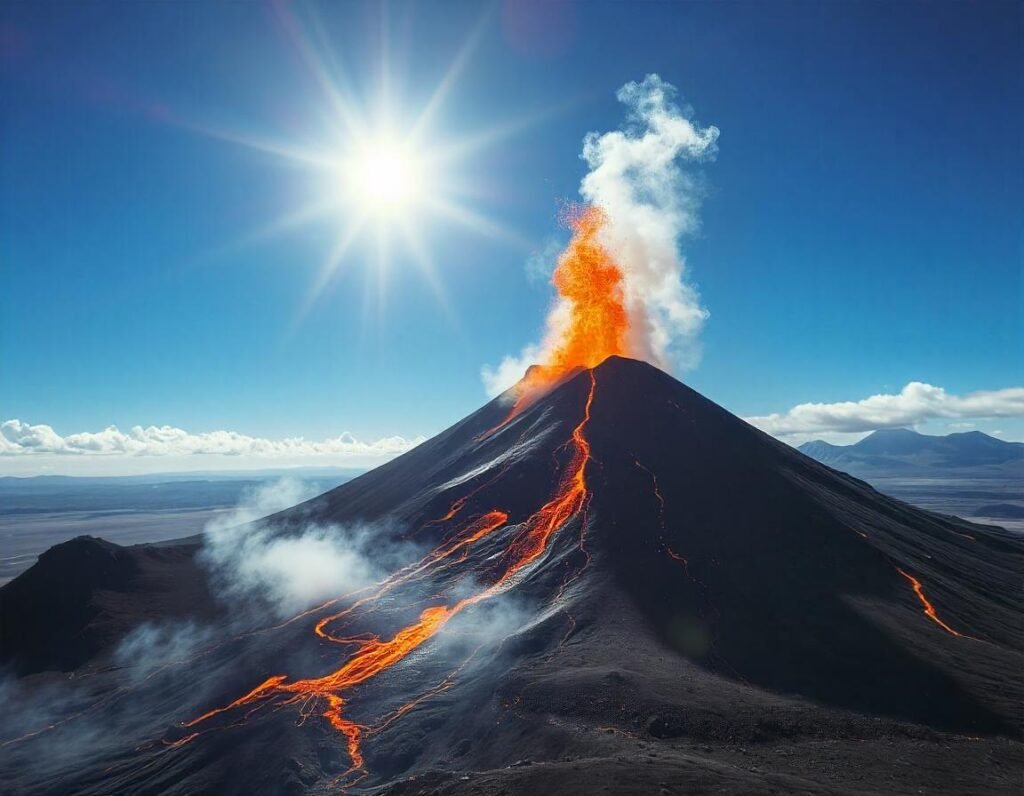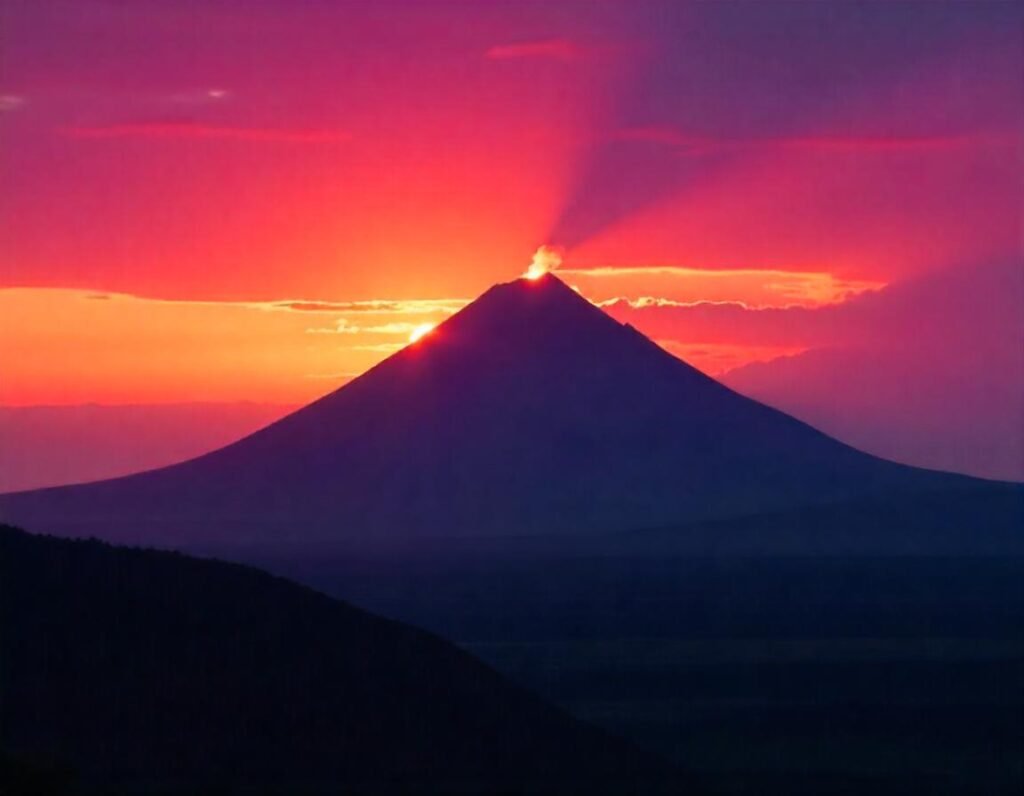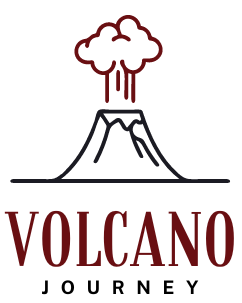Table of Contents
Introduction
Located in the Great Rift Valley in Tanzania, Ol Doinyo Lengai is then a functioning stratovolcano — it is art in its broadest sense. Standing tall indeed, the Maasai people hold it in high esteem as the ‘Mountain of God,’ owing to its breathtaking features, the overwhelming features that geology has to offer, and the fact that it holds a rather important place in their religious beliefs. Its natrocarbonatite lava, awesome landscape views, and deep-rooted cultural values make it an extraordinary place to visit.

So, if you are a fan of geology, a rock climber in search of an exciting wall to scale or an anthropologist eager to learn more about Maasai lore and customs then OL will not let you down. Tour here is not just a travel experience – it is a meeting with one of the most spectacular creations of the Earth.
The Majesty of Ol Doinyo Lengai
Evolving to an altitude of about 2,962 meters or 9,718 feet above sea level, Ol Doinyo Lengai soars over the dry savannah country of northern Tanzania. It sits within the large volcanic network that forms the EARS, the tectonic boundary wherein the continental crust is being stretched apart. The steep-sided close volcano overpowers the adjacent planes of Savannah and the famous Lake Natron.
What sets Ol Doinyo Lengai apart from other similar structures is its formation at the base of the usage of somewhat different materials. This is the only volcano through which natrocarbonatite lava occurs, and this is unusual because its temperature is relatively low, 500 – 600°C, as compared to other types of lavas known as silica lavas. This is an exciting feature that sets Ol Doinyo Lengai apart as a geologist’s oddity and the subject of much scientific investigation.
A Closer Look at Natrocarbonatite Lava
Natural carbonatite lava defines Ol Doinyo Lengai in that it is the only volcano that has it or produces it. The lava of this type comprises sodium and potassium carbonates, which lets us classify it as monotypic. Unlike the reds and oranges of regular lava, natrocarbonatite lava is black when it emerges from the crater and turns white in a few minutes because of a reaction with moisture and CO2. This transformation gives a character to the lunar kind of shades of white of powdery deposits that resemble snow on the mountain.
Another outstanding feature of natrocarbonatite lava is high mobility which can be associated with magma composition. The lava moves more like the water; it spreads rather quickly and traces sinusoidal paths. However, temperatures are not very high, and a traveler should be very careful as the hot spring may cause severe burns.
Cultural Significance to the Maasai People
To the Maasai people Ol Doinyo Lengai is not just a geological landmark, but it’s much, much more. They worship the place because they consider it as the house of their god known as Engai. Most of the indigenous people said they never witnessed the eruptions because they are a chief feature of the spiritual world and the Maasai people consider it to be a divine entity that influences and controls their activities including their spiritual activities and beliefs. People still travel to the mountain pray, and perform rituals and ceremonies on the mountain.
The ongoing respect for Ol Doinyo Lengai is therefore a perfect example of the way by which natural structures are associated with various indigenous beliefs. This mutual relationship provokes the need to save not only the physical world but also the history which is around it.
Adventures Await: Climbing Ol Doinyo Lengai
Ascending Ol Doinyo Lengai is a thrilling but rather demanding activity, for which people come from all over the world. The ascend is usually done at night so that hikers can get to the summit before dawn. The night climb allows cooler temperatures and being able to glimpse the first light over the striking scenery.
Key Highlights of the Climb:
- Steep Terrain: The climb itself is quite tense and tiring and some basic level of physical shape and willpower is needed.
- Unique Lava Patterns: Finally, lava flows that have solidified are common features for hikers and they make the experience even more surreal.
- Breathtaking Views: At the summit of the mountain, great opportunities to view the Lake, the Rift Valley, and the savanna plains are offered.
It particularly advises against exploring the mountain independently for security’s sake, and if a person has to, at least they do it while learning the history of the mountain or any other historical or cultural fact concerning the mountain. Some parts will most definitely call for a good deal of fitness levels but the feeling atop the peak and the view of the surrounding region makes the whole experience worth the bother.
Check Out: Mount Tambora: A Complete Travel Guide.
The Ecosystem Around Ol Doinyo Lengai

Being in the vicinity of Ol Doinyo Lengai is like being within an ecological corner of wealth. To the north of Amboseli is Lake Natron which is an important breeding site for the lesser flamingos. Healthy flamingos cannot live on the lake water due to their high alkalinity, which is toxic for most other species; however, you will find flamingos here, as they feed on the cyanobacteria that are comfortably common in the salty water of the lake.
Wildlife forestation is thriving in arid plains and other inhabitants include zebras, giraffes, wildebeests, and other grazers. These animals survive on the few shrubs that are scattered on the land in question.” The region also has colorful birds and the birding enthusiasts would therefore find the region very suitable.
Geological History and Activity
More so, Ol Doinyo Lengai has a great geological background as much as it has an active present-day stratum. It has been active for a long time to erupt periodically, and it has been recorded that the volcano erupted in the late 1800s. It has predominantly Strombolian activity which involves the ejection of lavas and ash expulsions that occur in bursts.
Most catastrophes that occurred between 2007 and 2008 have led to a distinct morphological change of the crater with new features that have again attracted scientific interest. These eruptions also affected populations around the volcanoes as it was paramount to observe the volcanic activities and prepare for such eventualities.
Currently r, researchers are exploring Ol Doinyo Lengai as they try to decipher what causes the specific kind of eruption experienced there. This paper not only provides qualitative and quantitative information on the described volcano but also adds new data to the global understanding of tectonic and volcanic processes on Earth.
The Unique Wonders of Natrocarbonatite Lava
Since the formation of natrocarbonatite lava, Ol Doinyo Lengai remains the only active volcanic cone in the whole world. This lava is different because of its chemical nature; it contains sodium and potassium carbonates. While silicate lava generally emits red or orange light, natrocarbonatite is black when it emerges from the volcano and becomes white when it comes in contact with the atmosphere to make the environment look like newly fallen snow.
At around 500-600 ° C, its viscosity is closer to water and it spreads out and forms different patterns as seen. These exceptional features have turned the structure into a research destination of choice, allowing scientists to study unusual volcanic activity. For the adventurer and the geologist, perhaps the most awe-striking feature is when the opportunity is given to, at least, once in a lifetime monitor this incredible action that occurs within the earth’s systems.
The Cultural Reverence of Ol Doinyo Lengai Among the Maasai
To the Maasai, Ol Doinyo Lengai is not simply a mountain but a symbol of their religion about which they are incredibly passionate. They also called it the Mountain of God, for it is considered that their god, Engai, had his dwelling place there. These are believed to be episodes where god demonstrated his might and this is cyclic to rekindle the religious position of the mountain. The Maasai chant, sing prayers, and sing ceremonies to deepen their connection with the ground at its base.
Therefore this cultural respect demonstrates the sacredness of the mountain as an interface between natural life and ethnic values. Readers, in turn, being informed about this unbreakable link, are provided with an appreciation of cultural factors as well as the need to respect the spiritual atmosphere of this incredible attraction.
Sustainable Tourism and Conservation
Unlike most other attractions, Ol Doinyo Lengai is likely to attract people seeking adventure and cultural tourism, and this is where it also experiences the main problem of easy access and accommodation. Various practices of sustainable development aimed at the preservation of the mountain and its environment for future generations are crucial.
Tips for Responsible Travel:
- Hire Local Guides: Promote local employment by hiring Maasai guides who will give priceless information about the Mount and its cultural-historical importance.
- Leave No Trace: The wastes should be disposed of and all sorts of damage to the rather sensitive environment should be avoided.
- Respect Local Customs: Like all tribal people, there are certain prohibited items that cannot be taken into sacred Maasai places, thus respecting the Maasai’s religious and cultural practices.
Planning Your Visit
Anyone who intends to visit Ol Doinyo Lengai should do so in the dry season, between June and October, and December to February. These months are relatively fine with minimal challenges in hiking, unlike the previous months of the year.
Essential Tips:
- Permits: It is advisable to get permission from the Forest Department and organize guides with local tour operators.
- Gear: Hiking shoes should be worn since it is a hiking trail; it is advised that hiking be done at night, so warm clothing should be carried and water and snacks to be carried in adequate proportions.
- Health Precautions: Expect the altitude and get your immunizations before you fly to Tanzania.
Camping sites to environmentally friendly accommodation facilities are available within proximity and for various categories. Holidaymakers who wish to associate a visit to the Ol Doinyo Lengai with other attractions within the region such as the famous Serengeti plains of Tanzania or the Ngorongoro Crater then the best is all set for a wonderful Tanzanian experience.
Tips for Exploring Ol Doinyo Lengai
- Plan Your Visit During the Dry Season: It is advisable to visit Ol Doinyo Lengai while on a dosing tour to ensure clear visibility and hitch-free climbing from June to October and December to February, which is the dry season.
- Hire Experienced Local Guides: Although the climb is done by the local Maasai people, they guarantee the safety of the climbers as well as share interesting information about the geological formation and cultural relation of the mountain.
- Prepare for a Challenging Climb: The vegetation over most of the jungles is thick and, therefore, the trek needs a lot of physical strength. Begin training as early as you can and ensure to pack sturdy hiking footwear, sharp gloves, and preferably trekking poles for support.
- Pack the Essentials: Warm clothing should be worn for the cold at night and you should also carry enough water, protein bars for the energy boo,s,t, and a flashlight at times of the climb.
- Respect Local Customs: Respect their belief about the mountain which is a sacred thing to the Maasai tribe. Do not interrupt ceremonies, and do not go into restricted sites without prior permission.
- Leave No Trace: Planning and reliability is to Green by carrying all waste, no littering, and reducing the effect on the surroundings.
- Acclimatize to the Altitude: Acclimatize for thin air if you will be at high altitudes high up in the mountains or in any other high terrain. Drink water and don’t rush to the top.
- Combine with Nearby Attractions: For further interesting activities nearby you can visit Lake Natron which is a flamingo’s breeding ground or visit Serengeti National Park in Tanzania for an ultimate tour.
Benefits of Exploring Ol Doinyo Lengai
- Geological Insight: Observing the only natrocarbonatite lava volcano in the world opens up a teachable moment about the volcanic processes and the context of the Earth.
- Cultural Enrichment: Appreciation for indigenous Mohamed, religious beliefs, and culture is the key to understanding why the Maasai people view the mountain as a sacred place.
- Adventure and Challenge: The activity of climbing the steep slopes to reach the top of this specializedVolcanic land deserves its rightful place of honoring the feat it is to climb up to the top of the Ol Doinyo Lengai by having formidable views of the top point of the remaining upward slopes.
- Breathtaking Scenery: Photograph the beauty of the Great Rift Valley landscapes, Lake Natron, n and wide expanses of plains country that are perfect for photography. The locality is also teeming with bird life such as Flamingos and lots of wild animals unique to Africa that will interest wildlife lovers.
- Personal Growth: This explains why the climb requires a lot of hard work and the biological aspect presents a culturally different environment that forces one to think and endure as well as embrace mother nature. Tourism is the way of living where travelers prefer local guides instead of international ones and prefer local lodges instead of chain hotels, that way money will go directly to the Maasai people.
Conclusion
Ol Doinyo Lengai is not just like any other volcano, but a blend of structure culture, and mysterious customs in that region. From the scientific point of view, it has significant interesting geological sights; for example, the flow of natrocarbonatite lava occurs rarely. However, as a cultural and religious icon of the Maasai people, it has turned into the most exceptional elevation in the region. Known as “Mountain of the LORD” it fully embodies the meaning of the revered religious and historical site.
Regardless of whether one is a geologist a tourist or a cultural discoverer, the vicariously enjoyed breathtaking experience is one for the memory book. It leaves one and all with the internalized impression of nature and history that it entails. Yet, this global wonder needs to remain stunning and unspoiled to make an impressive impact on future generations willing to visit it and enjoy the astonishing place.
For more in-dept info: Click Here.
FAQ’s
What makes Ol Doinyo Lengai’s lava unique?
Ol Doinyo Lengai is unique from other active volcanoes since it produces natrocarbonatite lava. It contains high amounts of Sodium and potassium carbonates, has loa lower temperature than the common lava, and solidifies to a white color once in contact with the atmosphere.
Why is Ol Doinyo Lengai sacred to the Maasai people?
The Maasai view Ol Doinyo Lengai as a home to Engai, their God. The mountain is sacred as people go there to perform different rituals, pray, and make ceremonies.



